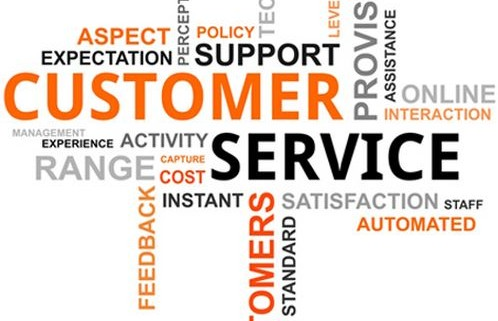Developing a Customer Service Philosophy
June 20, 2016
While we all have (or should have) a retail mission statement that emulates the mission of our institution, have you ever thought about a customer service philosophy? One of the most important aspects of a retail operation is its customer service and its philosophy about that customer service. What exactly do I mean by philosophy of customer service?
Two examples of retailers with emphasis on customer service are Nordstrom and Zappos. Nordstrom’s philosophy is to always offer their customers the best possible service, selection, quality, and value.Their philosophy has remained unchanged for over 100 years. Nordstrom’s offers the best possible service, all the time and every time. A newer company also at the top of the service charts is not even a bricks and mortar business. It is an online company – Zappos. They sell one thing – shoes, one of the most difficult things to sell online because (as we all know) you need to try shoes on for fit and comfort. Their company philosophy is: We are a service company that happens to sell. Zappos has figured out a non-traditional way to make the entire selling experience a high quality service experience. Zappos hires people that want to work for their company and embrace their company philosophy. As you can see from both of these companies, the emphasis is on service.
So, what is excellent customer service? It is made up of six simple ingredients: greeting customers; establishing their needs; highlighting promotions and product information; resolving grievances and problems; closing the sale; and thanking the customer for their purchase and support. And how can we give this excellent customer service? Store management needs to give their support staff the tools and information they need to deliver that quality service. If we want the staff’s number one priority to be the customer, then management’s number one priority needs to be the staff. If management gives staff what they need to do their job well, the customer experience will be the staff’s primary focus.
According to a 2009 Customer Experience Consumer Survey, even in the midst of a recession, companies that deliver exceptional customer experiences are rewarded with customers who buy more, leave less, and are willing to pay higher prices. Now that may sound crazy, but 40% of customers are willing to pay 10% or more to continue purchasing from companies delivering great experiences. If that experience improves, then 70% of consumers said they would spend 10% or more. And more than 66% of consumers surveyed said they are willing to spend 25% or more if their expectations are exceeded. You may be thinking that more than half of our customers will only shop with us one time; while this may be true about their in-store experience, if we give a WOW experience in our stores, they are more likely to visit us online and make future purchases.
Why make changes in how we are conducting our business? What is the payoff for these changes? Why should we set the bar higher? The answer is: we all want to drive amazing results to our bottom line. Our sole purpose is to create a net profit that goes back to our museum’s programming and educational mission. And the only way we can do this, is as a team within our stores, creating WOW experiences for our customers. We each play a vital role in the retail operations and if one of us is not pulling our weight, the cart cannot move forward.
So how are we going to make our WOW moments? According to the Webster’s definition, WOW is an indication of amazement or surprise; that you have delighted or impressed someone; that something was exciting. We are trying to leave our customer with a bit of surprise and amazement at their customer service experience. We want them to be enthusiastic in telling others about their experience. So, when we are with our customers we need to ask ourselves: what would enhance this customer’s experience, how can I make this a better experience, and why will this enhance the customer’s experience? Try to go above and beyond and WOW them whenever you can.
One of the smartest ways to begin developing a service philosophy is to bring the staff together and ask them what should be included. Throw out ideas, words, and thoughts. Inviting your team to participate gets the buy in you will need to eventually put into action your new philosophy statement. I did this at my institution and at the end of our idea-gathering session, we had the following statement: “As representatives of the Kennedy Center, we strive to give each customer an experience that goes above their expectations. We celebrate the skill, judgment, talent and dedication of our team in order to create an atmosphere that recognizes the importance of our customers.” Putting this simple statement to work each and every day will drive the change we need for the benefit of all. And the outcome is happier customers and museum guests who respond by making more purchases.
So, what’s your customer service philosophy?
Barbara Lenhardt, The John F. Kennedy Center for the Performing Arts








Leave a Reply
Want to join the discussion?Feel free to contribute!